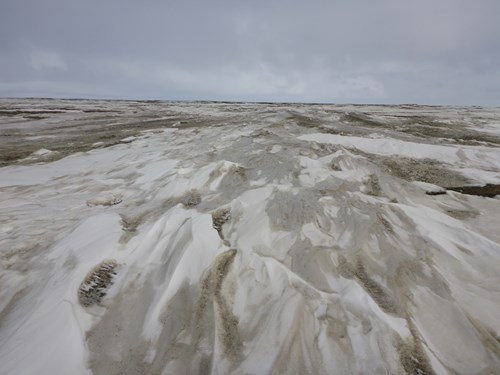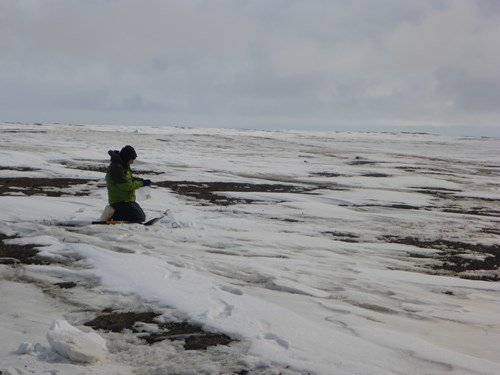- Dec 2
- Children of the Arctic
- Apr 18
- Snow, Wind, and Ice
- Apr 16
- Lesson from the Arctic
- Apr 14
- I Love Doing Science!
- Jan 28
- Bouncing Back in Whiteness
- Jan 27
- The Magical SAR Queen Rules!
- Jan 26
- Arctic Winter Science
- Jan 25
- A Day to Chill
4/29/2016
Today our newly expanded team split up to work on different tasks. Team Permafrost Geophysics (Andys, Esther, and Allen) headed for Peatball Lake for intensive TEM measurements and eroding bluff surveys. Team Arctic Delta (Ben and I) went farther west to the Ikpikpuk Delta where this sandsea river meets the Beaufort Sea. I will largely focus on what happened on the latter expedition because I was there and can confirm the events and general observations.

Main observation: it was really dirty. Deltas are obviously dirty places by definition, but typically when we visit during similar March-May trips it is entirely snowcovered and aside from slightly different topography, looks like other tundra around here, which is white, white, and white.

This year’s snow has been thin and conditions warm. Plus the winter was windy and likely mobilized any exposed soil and redistributed it on top of the snowpack. As we approached, streaks of brown silt and sand gradually turned into large patches and then bare patches of sediment to wide muddy bars. This is what this area typically looks like in late May to early June when thousands of snow geese use this area for nesting. We seem to be about a month early. How much longer will it be until distributary channels begin to flow and flood this area?

In any event, dark sediment on and in snow creates a strong positive feedback of more rapid melt. This is similar to when vegetation becomes exposed and warms the surrounding snow. We got the work down out there, measuring lake ice, surveying snow, and downloading and installing sensors for monitoring storm surge flooding.

We subsisted on a slice of pizza of Moose’s Tooth avalanche flavor, thanks to new Team Permafrost Geophysics members for smuggling it in.
